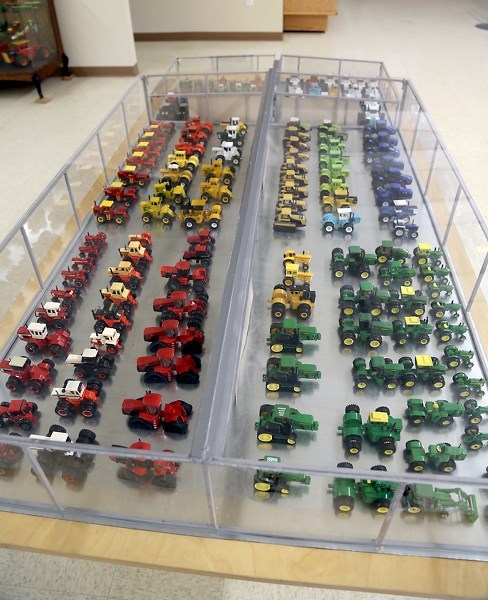Visitors to the Canadian Tractor Museum may have noticed a collection of model tractors on the right-hand side after coming in the front doors, but the story of where they came from is a tale more than two decades in the making.
Henry Senko donated the models to the museum about four years ago, in honour of his late father, William.
Senko, who grew up in the Pembina Heights area of Westlock County, collected close to 500 1/64th-size tractors and other farm implements over a 20-year period following leaving the family farm. “I thought this would be neat,” he said about collecting the models. “I never really left the farm, so I thought it would be a good way to keep in touch with it.”
Senko’s collection started after seeing models at a John Deere dealership. He picked up a few, and over the years got bitten by the collecting bug.
“A part of collecting gets to be the hunt for stuff,” he said.
Senko started his collection with two-wheel drive tractors, but eventually gave that up when it became apparent there were too many varieties to collect.
He then moved on to four-wheel drive units, in part because there are fewer of those than their two-wheeled brethren.
From there, Senko moved on to farming implements, many of which are custom built.
In addition to collecting models, he said he also got his hands on a number of equipment booklets and manuals on actual tractors. Those documents ended up at the museum along with the models.
Two events ultimately started to push Senko to donate the models and documents to the museum. The first was the death of his father. “When he passed away, I thought this might be a good remembrance thing, to give them to the museum” he said.
The second event was the realization the collection was taking up a lot of room in his home. Senko said he could have sold his collection, which includes several models that are rare enough to have fetched many times their original price. However, he felt donating them to the museum would be a better idea, if only so it could reap the proceeds from selling the collection.
“I didn’t expect them to actually put them up,” he said. “I thought they might sell them as a fundraiser.”
Once the museum received the donation, it did not go on display immediately, said tractor museum foundation president Rod McFarlane. Instead, they were put in storage until finally being displayed about two years ago.
McFarlane explained the delay was so that the museum could build a display case, as well as properly catalogue the items.
Now that the collection is on display, he said it’s also organized according to the museum’s overall theme — the evolution of the modern tractor.



